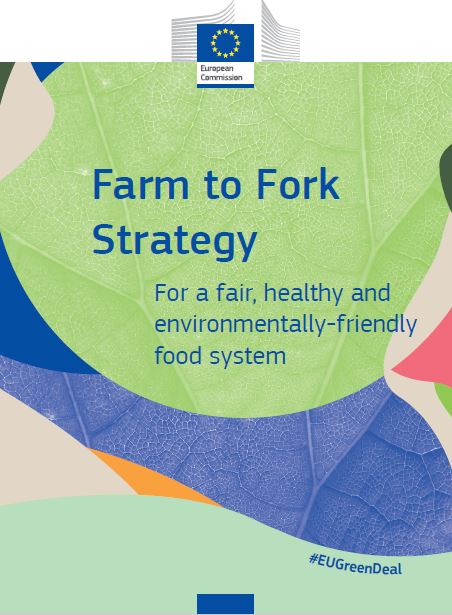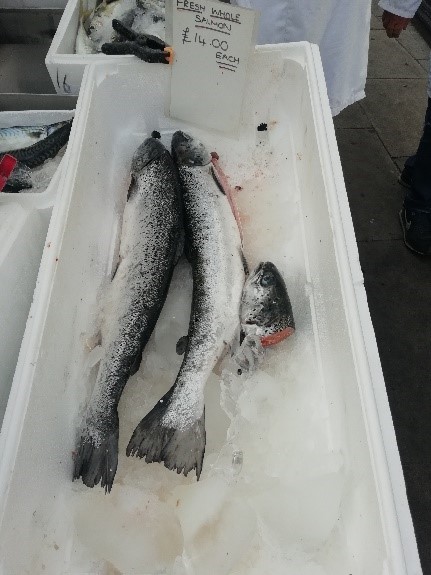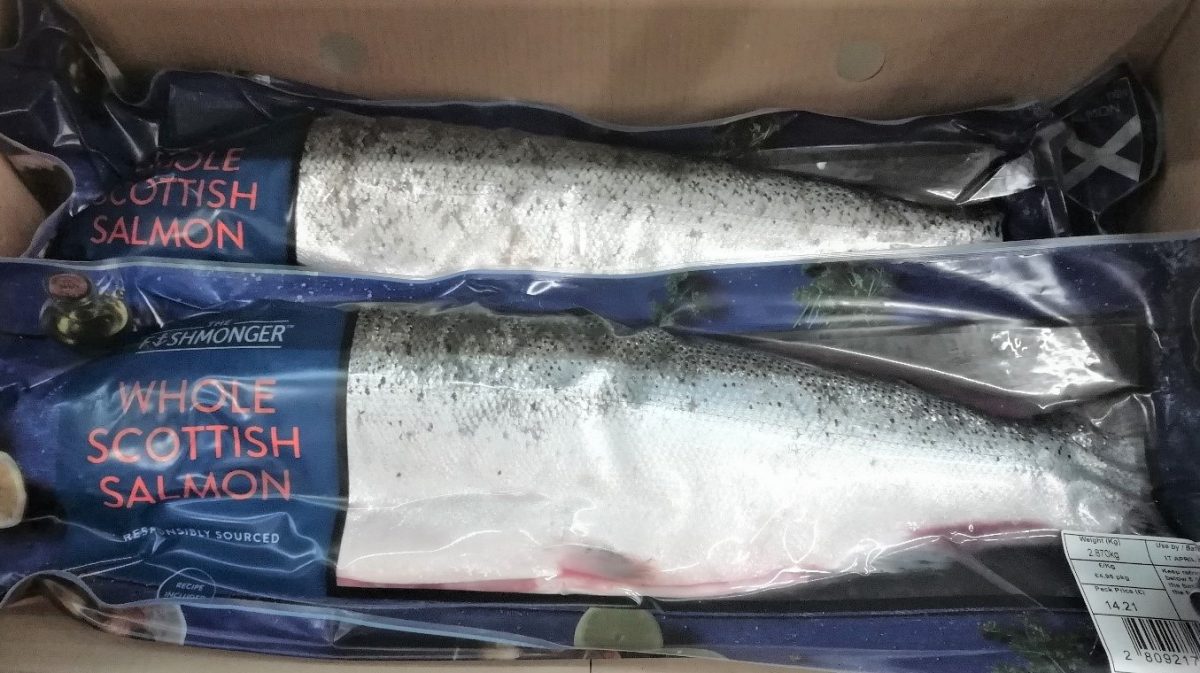 The EU Farm to Fork Strategy[i] is at the heart of The European Green Deal, which sets out ‘to make Europe the first climate-neutral continent by 2050’. The Covid-19 pandemic has shown the importance of robust and resilient food systems that function in any conditions, and made us aware of the interactions between our health and ecosystems, as well as supply chains, consumption and planetary limits. We clearly need to do more to keep ourselves and the planet healthy to meet future challenges.
The EU Farm to Fork Strategy[i] is at the heart of The European Green Deal, which sets out ‘to make Europe the first climate-neutral continent by 2050’. The Covid-19 pandemic has shown the importance of robust and resilient food systems that function in any conditions, and made us aware of the interactions between our health and ecosystems, as well as supply chains, consumption and planetary limits. We clearly need to do more to keep ourselves and the planet healthy to meet future challenges.
Awareness of environmental, health, social and ethical issues is increasing, although information on them is not always available. The Strategy stresses that in order to ensure sustainable food production, food producers including those in aquaculture need to ‘transform their production methods more quickly, and make the best use of nature-based, technological, digital, and space-based solutions to deliver better climate and environmental results, increase climate resilience and reduce and optimise the use of inputs (e.g. pesticides, fertilisers)’.
Energy
The Strategy also highlights that the circular bio-based economy is still a largely untapped potential, with the opportunities available such as production of renewable energy, and investment in anaerobic digesters to produce biogas from waste including wastewater and organic matter. Land-based structures such as recirculating aquaculture systems and processing plants could be ideal for solar panels, and adoption of such options should be fast-tracked.
Chemicals
The Strategy only addresses the use of chemical pesticides in agriculture, however their use in aquaculture, such as in open net fish farms, contributes to water pollution, and potentially to soil and air pollution. Ultimately this can harm non-target marine and freshwater plants and animals, including birds and mammals, and lead to biodiversity loss. In order to reduce the overall use and risk of chemical pesticides, the Commission will encourage the use of alternative control techniques, such as crop rotation and mechanical weeding. This is equally applicable to aquaculture where fallowing of aquatic sites and alternative mechanical or biological treatments can be used.
Excess nutrients
Again, the Strategy does not consider aquaculture in its overview of excess of nutrients (especially nitrogen and phosphorus) in the environment. In fish farms using open net pen structures, waste from uneaten fish food and fish faeces directly enters the aquatic environment, with a concentrated amount under the net pens[ii]. This waste can lead to excessive amounts of nutrients including nitrogen and phosphorus in the water column, and ‘eutrophication’ – accelerated algal growth that can lower water quality and produce toxic blooms potentially harmful to people, aquatic species and birds[iii]. It seems clear that aquaculture should be approached in the same way as agriculture, and nutrient pollution addressed at source to increase sustainability.
Feed
While aquaculture is often put forward as one of the lowest carbon footprint food production methods, this calculation does not always take account of feed materials. The production of feed is the dominating climate aspect for both open net and recirculating aquaculture systems[iv]. The ecological footprint for the production of feed needed for a single fish farm may be in the order of thousands of times larger than the area of the actual farm[v], with the result that ‘buying local’ may not necessarily be good for the environment. The Strategy puts forward EU ambition to reduce dependency on critical feed materials (e.g. soya grown on deforested land) by fostering locally-grown plant proteins as well as alternative feed materials such as insects, marine feed stocks (e.g. algae) and by-products (e.g. fish waste). Such an approach will be essential on a global scale if aquaculture is to be environmentally sustainable.
Antibiotics
The excessive and inappropriate use of antibiotics contributes to antimicrobial resistance which can result in increased human health issues and deaths[vi]. The EU aims to reduce sales of antibiotics for use in aquaculture by 50% by 2030. Levels of antibiotic use in Scottish salmon farming are comparatively low, with many farms and a significant number of salmon not treated with antibiotics[vii]. However continued decrease in antibiotic use should be a target across all aquaculture. Better animal welfare improves animal health, reduces the need for medication and can therefore help preserve biodiversity. New EU Strategic Guidelines on Aquaculture support revision of animal welfare legislation to ensure a higher level of animal welfare.
Organic farming is highlighted by the Strategy as a growing phenomenon. However, more needs to be done to shift towards organic practices in the oceans and inland waters, and the Strategy sets out an objective to have a significant increase in organic aquaculture by 2030.
Packaging
Food packaging plays a key role in the sustainability of food systems, with the Commission committing to ‘support the use of innovative and sustainable packaging solutions using environmentally-friendly, re-usable and recyclable materials’. With an estimated 22 million single-use polystyrene fish boxes used in the UK alone annually, there is a significant journey to be taken to achieve this aim[viii]. Although being developed, alternatives remain a niche area and are largely limited to specific supply chains.

Salmon in a polystyrene fish box ©Fidra
Achieving sustainability on an international platform
The Strategy acknowledges that significant innovation and research is required to accelerate transition to sustainable, healthy and inclusive food system, in particular on nature-based solutions and digital technologies. The role of the EU programmes Copernicus[ix] and European Marine Observation and Data Network (EMODnet)[x] are highlighted as factors that will facilitate sustainable practices and reduce investment risks in the aquaculture sector.
The EU’s support for the global transition to sustainable agri-food systems is outlined, including the development of ‘Green Alliances’ on sustainable food systems with partners in different parts of the world. To contribute to this will be the promotion of sustainable management of fish and seafood resources, and strengthening of ocean governance, marine cooperation and coastal management, especially in countries affected by climate change.
Of significant importance to the UK now is that imported food must continue to comply with relevant EU regulations and standards, with environmental aspects taken into account when assessing requests for import tolerances for pesticide substances no longer approved in the EU. To address antimicrobial resistance, imported products of animal origin will have to comply with strict requirements on the use of antibiotics in line with the recently agreed veterinary medicinal products Regulation.
In conclusion
The Strategy states that the EU will promote global transition to sustainable food systems and seek ambitious policy outcomes in international standard setting bodies, relevant multilateral fora and international events, including the fifteenth meeting of the Conference of the Parties to the UN Convention on Biological Diversity, the Nutrition for Growth Summit and the UN Food Systems Summit in 2021. In addition the EU aims to promote schemes such as an EU sustainable food labelling framework as part of its approach to food information to consumers, and combine this with a legislative framework on sustainable food systems. By leading work on international sustainability standards and environmental footprint calculation methods in multilateral fora, it aims to promote a higher uptake of sustainability standards and support enforcement of rules on misleading information.
Although no longer part of the EU, the UK will need to keep aligned with its requirements in order to remain a close trading partner, and should be matching if not exceeding its ambitions and targets.

Packaged whole Scottish salmon © Fidra
[i] https://ec.europa.eu/food/sites/food/files/safety/docs/f2f_action-plan_2020_strategy-info_en.pdf
[ii] Navarro, N. et al (2008) Effect of salmon cage aquaculture on the pelagic environment of temperate coastal water: seasonal changes in nutrients and microbial community. Marine Ecology Progress Series, 361, pgs.: 47-58.
[iii] Wilson, A. et al (2009) Review of environmental impact assessment and monitoring in salmon aquaculture. In FAO. Environmental impact assessment and monitoring in aquaculture. FAO Fisheries and Aquaculture Technical Paper. No. 527. Rome, FAO. pgs.: 455-535.
[iv] Liu, Y. et al (2017) Comparative economic performance and carbon footprint of two farming models for producing Atlantic salmon (Salmo salar): Land-based closed containment system in freshwater and open net pen in seawater. Aquacultural Engineering, 71, 1-12.
[v] Nautsky, N. et al (1997) Ecological footprint for assessment of resource use and development limitations in shrimp and tilapia aquaculture. Aquaculture Research, 28, 753-766.
[vi] WHO (2015) Global Action Plan on Antimicrobial Resistance. Geneva: WHO; 28pp. https://apps.who.int/iris/bitstream/handle/10665/193736/9789241509763_eng.pdf?sequence=1
[vii] RUMA (2020) Targets Task Force Report 2020: Responsible use of antibiotics in UK farming. Progress against 2020 targets. New targets 2021-2024. Responsible Use Of Medicines In Agriculture Alliance, 79pp. https://www.ruma.org.uk/targets-task-force-2021-2024/targets-2017-2020/
[viii] https://www.bestfishes.org.uk/make-ditching-polystyrene-fish-boxes-a-new-year-resolution-for-2020-the-year-of-coasts-and-waters/
[ix] https://www.copernicus.eu/en
Tags: aquaculture, Farm to Fork, fish farm, open net pen, salmon farming, Scottish salmon

